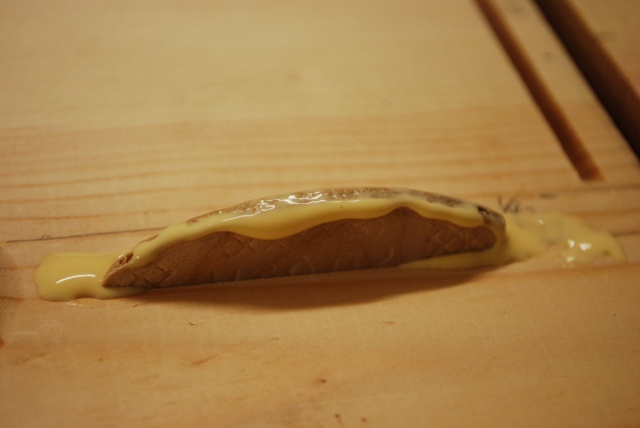
| 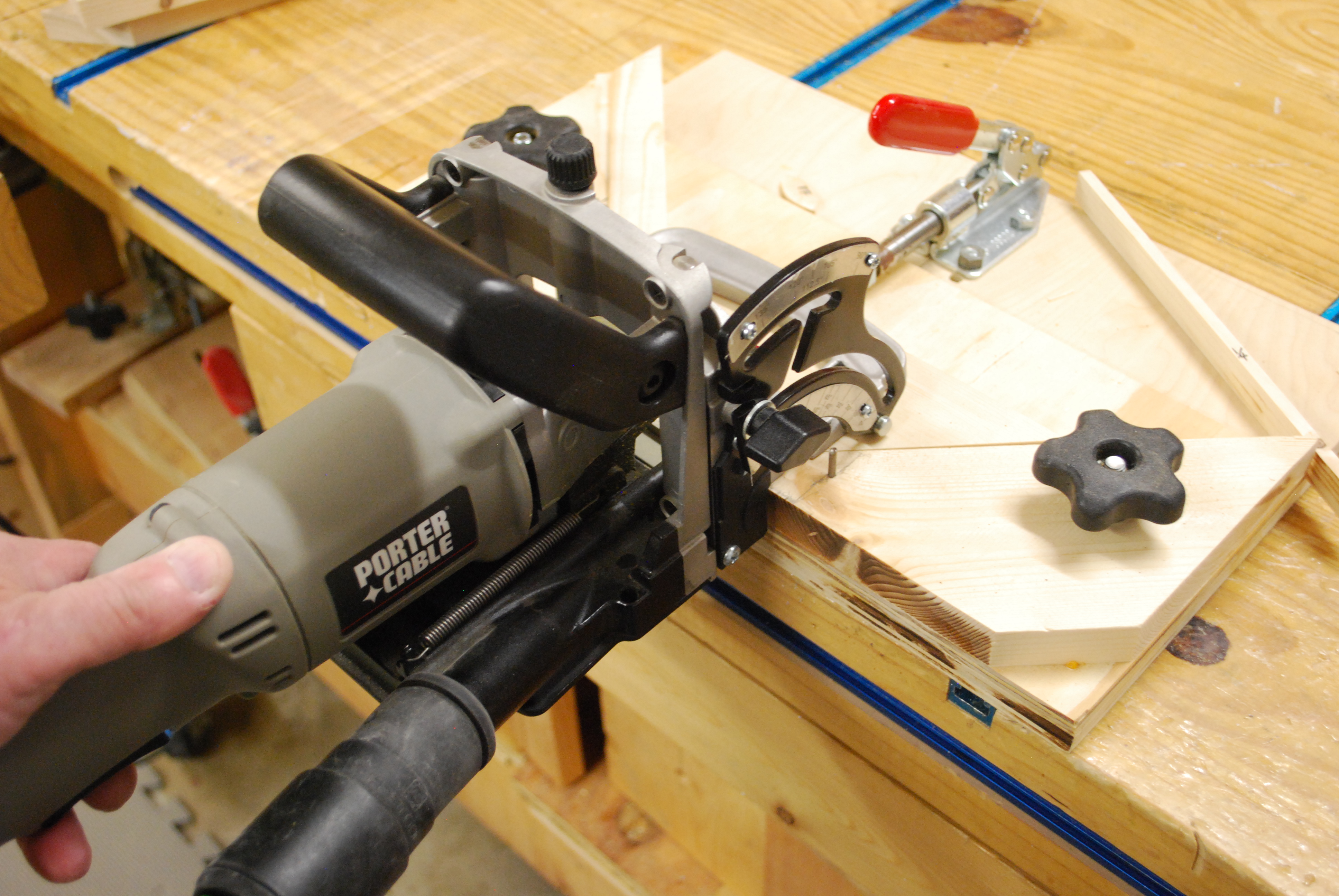
|
|
Gluing Biscuits
|
I don't think I ever showed exactly how I use biscuits, so here goes.
These are shots of one of the small stools I made, for more pics of the stools including how the slots are cut go here
I have two Biscuit (Plate) Joiners, you see here the Porter Cable which I now only use wity type 'FF' biscuits (I got the Porter Cable jointer 'FF' blade).
The pic above, is the Porter Cable slotting a mitered corner in small material.
My other Biscuit Jointer is a DeWalt (DW682) which I do most of my biscuiting with, I havet'n found a DeWalt blade for type 'FF' biscuits.
I use biscuits on picture frames, I even made a
jig to cut the slots at 45°
.
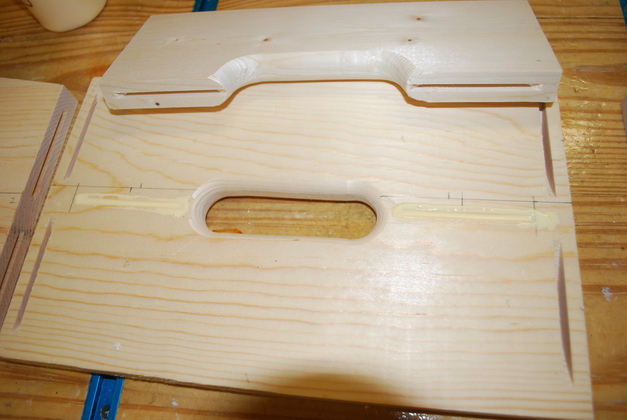
|
All the slots (mortises) are cut and I have already pushed a bead of glue across the two center brace slots (either side of the finger hole).
I "push" a bead of glue across the biscuit mortise making sure I get glue on both sides and some flows into the mortise.
Bead Push Example Pic.
|
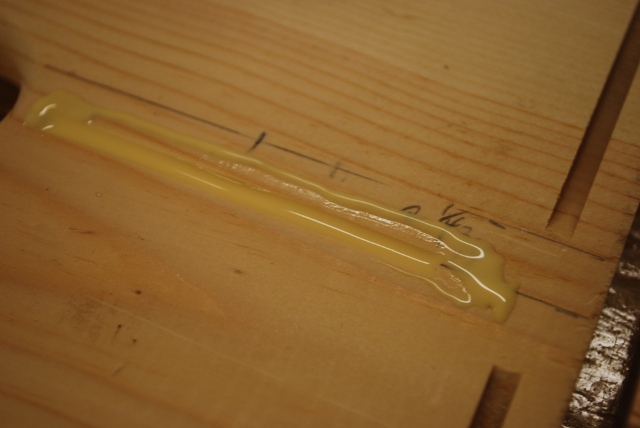
|
A closer look at a mortise, with glue in slot and on both sides, ready for the biscuit.
The pencil line above the mortise is a reference line for the slot cutter alignment.
I use the DeWalt slot cutter for these which cuts the slot 3/8" above it's base, I don't use the drop down plate on this type of slot.
|
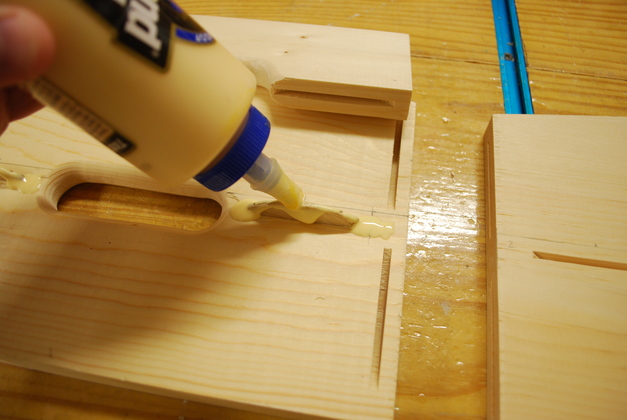
|
I put the biscuit in the slot then tap it down with a wooden mallet, and run a bead glue across the top.
When the biscuit is inserted in it's mating slot, glue from the bead on top will be wiped down both sides of the biscuit.
Then I put the brace onto the two biscuits and tap it down and check alignment, then use clamps on each end to drive the glue into the wood pores.
In all these application shots I am applying left handed and taking the pic right handed, not my best glue applicaion.
|

|
A biscuit, in it's mortise, with glue on top, ready to be mated.
When the two pieces are joined, the matching mortise will spread the glue down the side of this biscuit.
|

|
The center brace is down, now I am pushing a bead across a slot for the stool end piece.
|
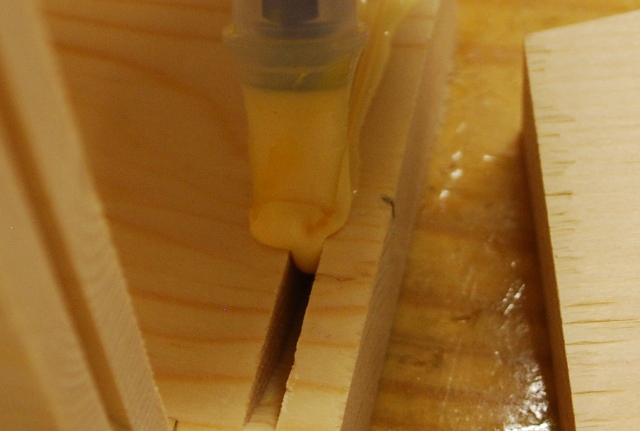
|
Zoom of above shot, putting glue into mortise.
Note glue going down into mortise and on both sides.
|
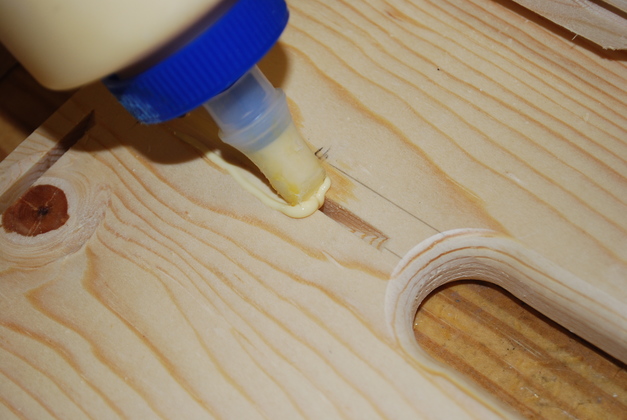
|
Here I'm pushing a bead across the end piece, center brace slot.
You can see I'm going slow enough that the glue is flowing down into the slot just a bit and I'm geting glue on both sides of the mortise.
|

|
The biscuit is in the slot and tapped down, but not all the way, the clamps will do that.
The two mortises on the left have been glued with no voids and glue on both sides of the slot, you can see where a little of the glue "sags" into the slot.
Notice I put glue on slots and biscuits that are facing up, not on vertical slots like the one on the left.
|
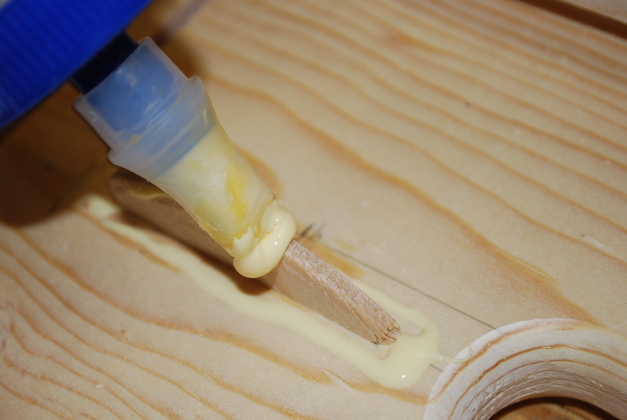
|
Pushing a bead across the top of a biscuit.
The glue on top of this biscuit will be forced into the receiving mortise.
|

|
Now glue across the top of the biscuit.
Note, I usually do slots that are laying horizontal facing up so the glue doesn't run to one end.
The receiving slot for this biscuit is shown on the left, vertical.
I won't put any glue directly on the vertical slot, just the horizontal biscuit and mortise on one side of the joint is enough.
I'll do the same with biscuits in the other slots (on left) then align the board, tap it down a little then clamp it.
|
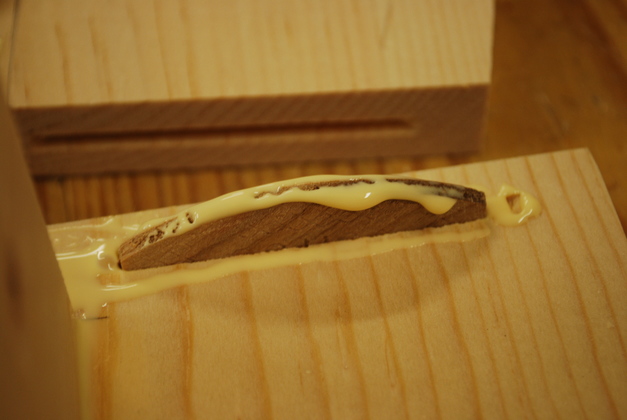
|
One of the other biscuits with it's receiving slot in the background.
Just remember, clamping makes the glue distribute and forces it into the wood's pores.
|
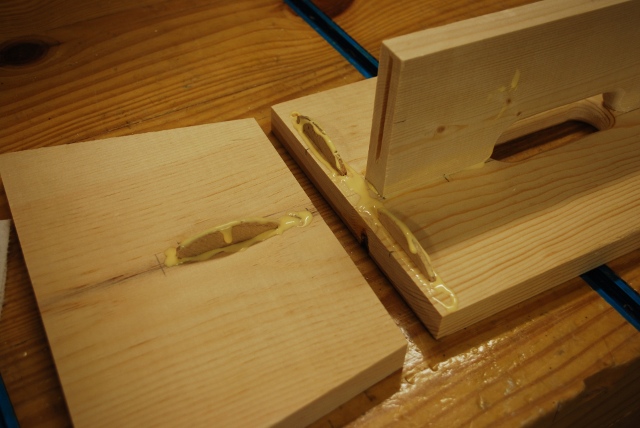
|
One end of the stool ready to align and tap in then clamp.
After the clamps are on, I'll wipe all the excess glue off.
The brace has already been clamped down to force it's joints with the stool top to seat and glue into the wood pores.
One of the neat things about using biscuits is this kind of joint.
I can pivot the side up and place it on top of the two biscuits, then continue the pivot as I push down, so the vertical biscuit engages it's mortise.
This allows right angle joints, like this, that wouldn't be possible with something like dowels or dominos.
|
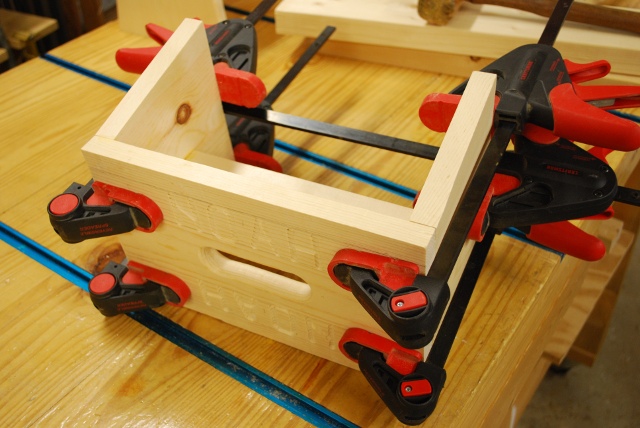
|
The stool clamped, waiting for the glue to set.
|














